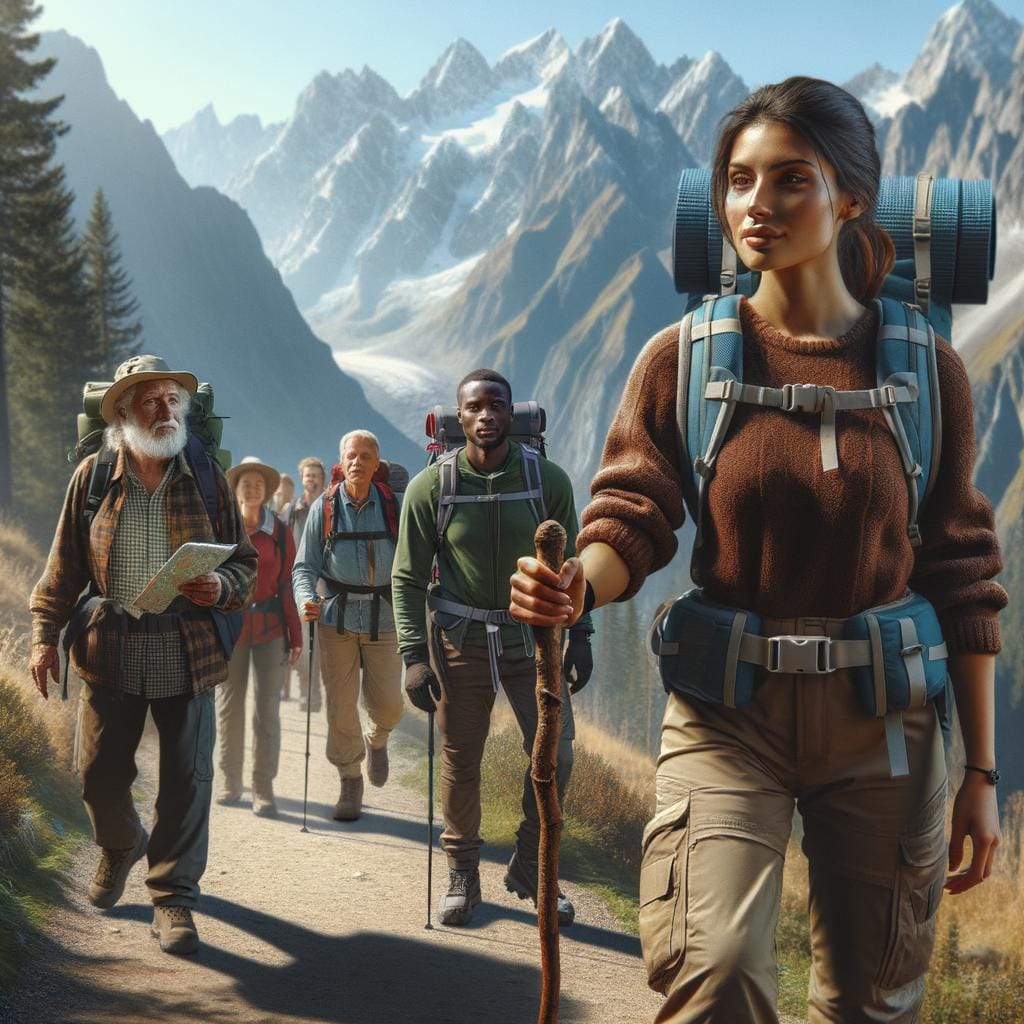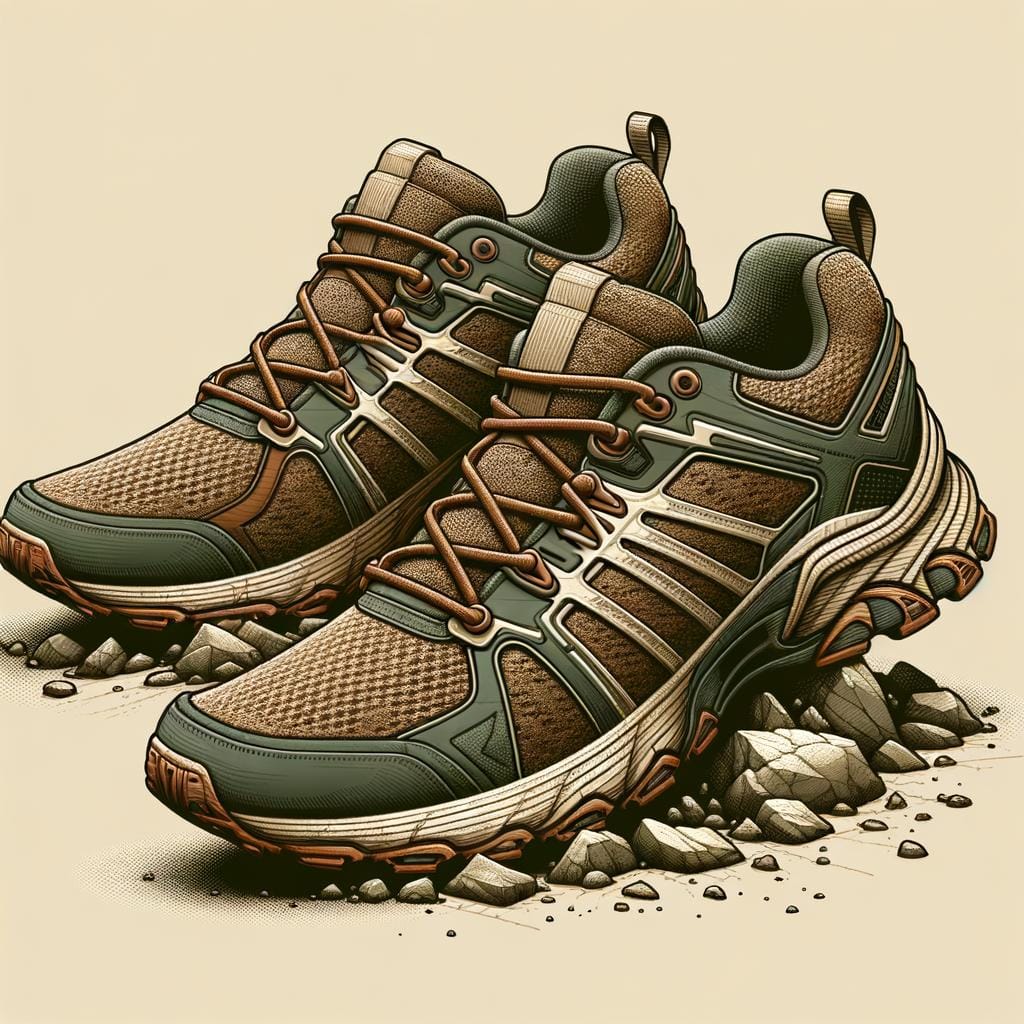Trail races have become increasingly popular in the world of running, attracting athletes seeking to push their limits on rugged terrains and challenging landscapes. These off-road competitions offer a unique experience for runners looking to escape the confines of traditional road races and embrace the beauty of nature. With the growing interest in outdoor adventures and wellness, trail races have seen a surge in participation from seasoned athletes and beginners alike.
Unlike standard marathons or track races, trail races take participants through varying terrains such as forests, mountains, deserts, and even snow-covered trails. This diversity not only tests endurance but also demands a different set of skills from runners, making each race a thrilling and unpredictable adventure. The exhilaration of navigating through untamed nature while racing against fellow competitors has captivated the hearts of many individuals looking for a more exciting and rewarding running experience.
In this introductory section, we will delve into the essence of trail races – exploring what makes them unique and why they have gained popularity among runners worldwide. From the physical challenges to the mental resilience required, trail running offers an escape from the ordinary, allowing participants to test their limits in some of the most breathtaking environments on Earth.
Whether you’re a seasoned trail racer or considering your first off-road adventure, join us as we uncover the allure and benefits that come with embarking on this thrilling journey through nature’s wonders.
Benefits of Trail Running
Trail running, particularly in the form of trail races, offers a wide array of benefits to both seasoned athletes and beginners alike. One of the primary advantages of hitting the trails instead of pounding the pavement is the reduced impact on joints.
The natural terrain of trails provides a softer landing compared to concrete or asphalt, which can help prevent injuries and reduce strain on muscles and bones. Additionally, the uneven surface of trails forces runners to engage stabilizing muscles that may not be used as much during road running, leading to a more well-rounded workout.
On a mental and emotional level, trail running can provide a much-needed escape from the hustle and bustle of everyday life. The serene surroundings of nature can have a calming effect on runners, reducing stress levels and improving overall mental well-being.
Trail races also offer a sense of adventure and exploration as participants navigate through forests, mountains, or deserts, adding an element of excitement to their fitness routine. Moreover, the supportive community often found in trail running events can boost confidence and motivation, creating a sense of camaraderie among fellow athletes.
For those looking to challenge themselves both physically and mentally, participating in trail races can be incredibly rewarding. Not only do these events test endurance and strength, but they also require quick thinking and adaptability due to unpredictable terrain conditions. Overcoming obstacles like steep inclines, rocky descents, and stream crossings can build resilience and determination in runners. The sense of accomplishment that comes with completing a challenging trail race can instill confidence that permeates into other areas of life.
| Key Benefits | Details |
|---|---|
| Reduced Impact on Joints | The natural terrain provides a softer landing surface than concrete or asphalt. |
| Mental Well-Being | Nature surroundings can have a calming effect, reducing stress levels. |
| Challenging Yet Rewarding | Trail races test endurance, strength, quick thinking, adaptability. |
Essential Gear for Trail Races
Trail races present a unique set of challenges compared to road races, requiring runners to invest in specific gear to navigate rugged terrains and varying weather conditions. Here are some essential pieces of equipment that every trail runner should consider adding to their kit:
- Trail Running Shoes: A good pair of trail running shoes with aggressive treads for traction on slippery surfaces is crucial. Look for shoes with rock plates to protect your feet from sharp rocks and debris.
- Hydration Pack or Vest: Staying hydrated during long trail races is essential. Opt for a hydration pack or vest that allows you to carry water, electrolyte drinks, snacks, and other essentials without hindering your movement.
- Compression Gear: Compression socks or sleeves can help improve circulation, reduce muscle fatigue, and provide added support during challenging trail runs.
In addition to these must-have items, trail runners should also consider packing lightweight layers for unpredictable weather conditions, sunscreen to protect against sun exposure at higher altitudes, and a first aid kit for emergencies. Investing in quality gear not only enhances your performance but also ensures your safety on the trails.
When preparing for trail races, it’s essential to test out your gear during training runs to ensure everything fits comfortably and functions properly. By equipping yourself with the right tools and accessories, you’ll be better prepared to take on the rugged terrains and obstacles that come with participating in trail races. Remember, proper gear can make all the difference in your overall experience on the trails.
Training Tips for Trail Races
Trail races present a unique set of challenges compared to road races, requiring specific preparation and training to tackle rugged terrains successfully. Here are some expert tips to help runners effectively prepare for trail races:
- Gradually increase mileage: Trail running can be more demanding on the body due to the uneven terrain and elevation changes. It is essential to gradually build up mileage to avoid overuse injuries and allow your body to adjust to the demands of running on trails.
- Incorporate strength training: Strengthening exercises for the lower body, core, and stabilizing muscles are crucial for improving balance, stability, and reducing the risk of injury while running on challenging trails.
- Practice downhill running techniques: Running downhill can be as challenging as running uphill in trail races. Practicing proper form, such as leaning slightly forward and letting gravity do some of the work, can help you navigate descents more efficiently and safely.
In addition to physical preparation, mental fortitude is key when it comes to conquering trail races. Visualizing success, staying focused during challenging sections, and maintaining a positive mindset can make a significant difference in your performance on race day. Embracing the unpredictable nature of trail running and being prepared for any obstacles or setbacks that may arise will also help you stay motivated and resilient throughout the race.
Lastly, familiarize yourself with the course terrain and conditions before race day. Training on similar trails can give you a better understanding of what to expect during the race, helping you strategize your pacing and energy conservation.
Practice fueling strategies during long runs or training sessions to determine what works best for your nutritional needs during trail races. By following these training tips and being well-prepared both physically and mentally, you’ll be ready to take on the challenges of trail racing with confidence and success.
Top Trail Races Around the World
Trail running has become increasingly popular among runners seeking a new and exciting challenge. The appeal of trail races lies in the opportunity to explore breathtaking natural landscapes while pushing physical limits. These events offer participants a break from the monotony of road races, allowing them to immerse themselves in the beauty of nature while testing their endurance on rugged terrains.
One highly acclaimed trail race that every runner should aspire to experience is the Western States Endurance Run in California. Known as the oldest 100-mile trail race in the world, this event takes participants through spectacular mountain scenery, challenging climbs, and technical descents. Another iconic race is the Ultra-Trail du Mont-Blanc (UTMB) in Europe, where runners circumnavigate the majestic Mont Blanc massif through France, Italy, and Switzerland.
For those looking for a unique cultural experience along with their trail racing adventure, the Marathon des Sables in Morocco offers a grueling multi-stage race through the Sahara Desert. Participants must be self-sufficient and carry all their supplies for the duration of this six-day event.
These top trail races not only test physical endurance but also provide unforgettable experiences in some of the most stunning locations around the world. Whether you’re an experienced trail runner or a novice looking to step out of your comfort zone, adding these races to your bucket list is sure to ignite your passion for trail running.
Safety Precautions for Trail Races
Trail running is an exhilarating and challenging sport that has been gaining popularity among runners of all levels. While it offers a unique experience compared to road races, trail races also pose certain risks due to rugged terrains, unpredictable weather conditions, and remote locations. Safety precautions are essential to ensure a safe and enjoyable trail running experience.
Proper Preparation
One of the key safety precautions for trail races is proper preparation. Before heading out on the trails, it is important to research the route, familiarize yourself with the terrain, and check the weather forecast.
Ensuring that you have the right gear, plenty of water, snacks, a map or GPS device, and a fully charged phone can make a significant difference in staying safe during the race. Additionally, informing someone of your intended route and estimated return time is crucial in case of emergencies.
Trail Etiquette
Another important aspect of safety in trail races is adherence to trail etiquette. This includes being courteous to other runners and hikers on the trails, yielding to faster runners or those going uphill, and avoiding blocking the path when taking breaks. Staying on marked trails and avoiding shortcuts helps protect natural habitats and prevents getting lost. Being aware of wildlife in the area and knowing how to react if encountered is also necessary for safety during trail races.
Emergency Preparedness
Finally, being prepared for emergencies is vital for safety during trail races. Carrying a basic first aid kit including essentials like bandages, antiseptic wipes, blister pads, and any necessary medications can be life-saving in case of injuries or accidents on the trails.
Knowing basic first aid skills such as treating minor cuts or managing dehydration can go a long way in ensuring a safe outcome during a trail race. Being mentally prepared for unexpected situations by staying calm and having a plan can help mitigate risks while enjoying the challenges of trail running.
Nutrition for Trail Runners
Trail running presents unique challenges compared to road running, making proper nutrition essential for success. Fueling your body adequately before, during, and after trail races can make a significant difference in performance and recovery. Trail runners often face varying terrains, elevation changes, and unpredictable weather conditions, which all require careful consideration of nutritional needs.
Fueling Before the Race
Before hitting the trails for a race, it’s crucial to fuel your body with the right nutrients to optimize performance. Aim for a balance of carbohydrates, proteins, and fats in your pre-race meal to provide sustained energy throughout the run. Avoid foods that may cause gastrointestinal distress and opt for easily digestible options like oatmeal, bananas, or toast with nut butter.
Hydration During the Race
Staying properly hydrated during trail races is vital due to the increased intensity and duration of these events. Carry a hydration pack or water bottle with you on longer runs to ensure you stay hydrated on the go. Consider electrolyte drinks or gels to replenish lost minerals and maintain energy levels during strenuous climbs or challenging sections of the trail.
Recovery After the Race
Post-race nutrition plays a crucial role in recovery and muscle repair after a demanding trail race. Refuel with a balanced meal that includes carbohydrates to replenish glycogen stores, protein for muscle recovery, and healthy fats to aid in nutrient absorption.
Don’t forget to hydrate adequately and consider incorporating anti-inflammatory foods like tart cherry juice or turmeric into your post-race meals to reduce muscle soreness and promote faster recovery. Proper nutrition can make a significant impact on your performance and overall well-being as a trail runner.
Success Stories From Trail Racers
Trail races have captured the hearts of runners around the world, offering a unique and challenging experience that pushes participants to their limits. From rugged terrains to stunning landscapes, trail races provide a true test of endurance, strength, and mental fortitude. As more and more runners seek to break away from traditional road races, the popularity of trail races continues to soar.
One of the most inspiring aspects of trail racing is the stories of triumph and perseverance that emerge from these events. Many trail runners have faced formidable obstacles along their journey, whether physical limitations, injuries, or personal challenges.
Despite these hurdles, they have refused to give up and have emerged stronger and more determined than ever before. These success stories serve as a beacon of light for aspiring trail racers, showing them that with dedication and resilience, anything is possible on the trails.
From conquering steep inclines to navigating treacherous descents, trail racers push themselves beyond their comfort zones in pursuit of their goals. Each race offers an opportunity for growth and self-discovery, allowing participants to tap into their inner strength and grit.
Whether it’s finishing a challenging ultra-marathon or setting a new personal record on a technical course, trail racers continue to inspire others with their tenacity and unwavering spirit. As the community of trail runners continues to grow, so too does the legacy of these remarkable individuals who dare to dream big and conquer the trails ahead.
Frequently Asked Questions
What Is the Toughest Trail Race in Indiana?
The toughest trail race in Indiana is often considered to be the Dances with Dirt Gnaw Bone event. This race covers challenging terrain, including steep hills and dense forests, making it a true test of endurance for participants.
What Is a 100 Mile Race Called?
A 100-mile race is typically called an ultramarathon. These races are known for pushing runners to their limits both physically and mentally, requiring not only physical strength but also incredible mental toughness to complete.
Is Trail Running Harder Than Pavement?
Trail running is often perceived as more challenging than running on pavement due to the varied terrain and obstacles present on trails. Trails can include steep inclines, rocky or muddy paths, and uneven surfaces, which demand more effort and focus from the runner compared to the consistent surface of pavement running.

An avid outdoor enthusiast, writer, and environmental advocate who has spent over two decades exploring the world’s most breathtaking landscapes. With a background in environmental science and a passion for adventure, Frances combines her love for nature with her talent for storytelling to inspire others to embark on their own outdoor journeys.





